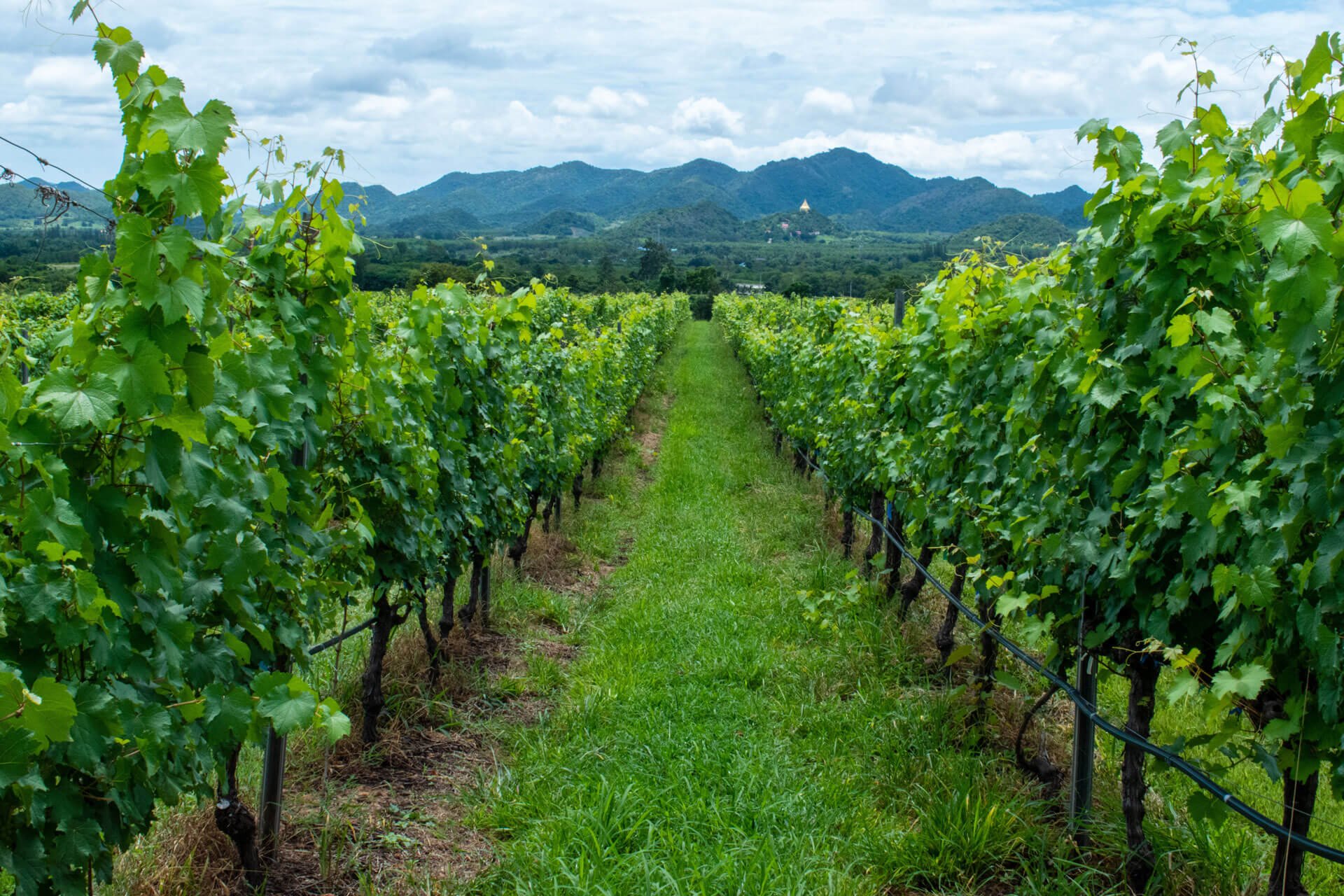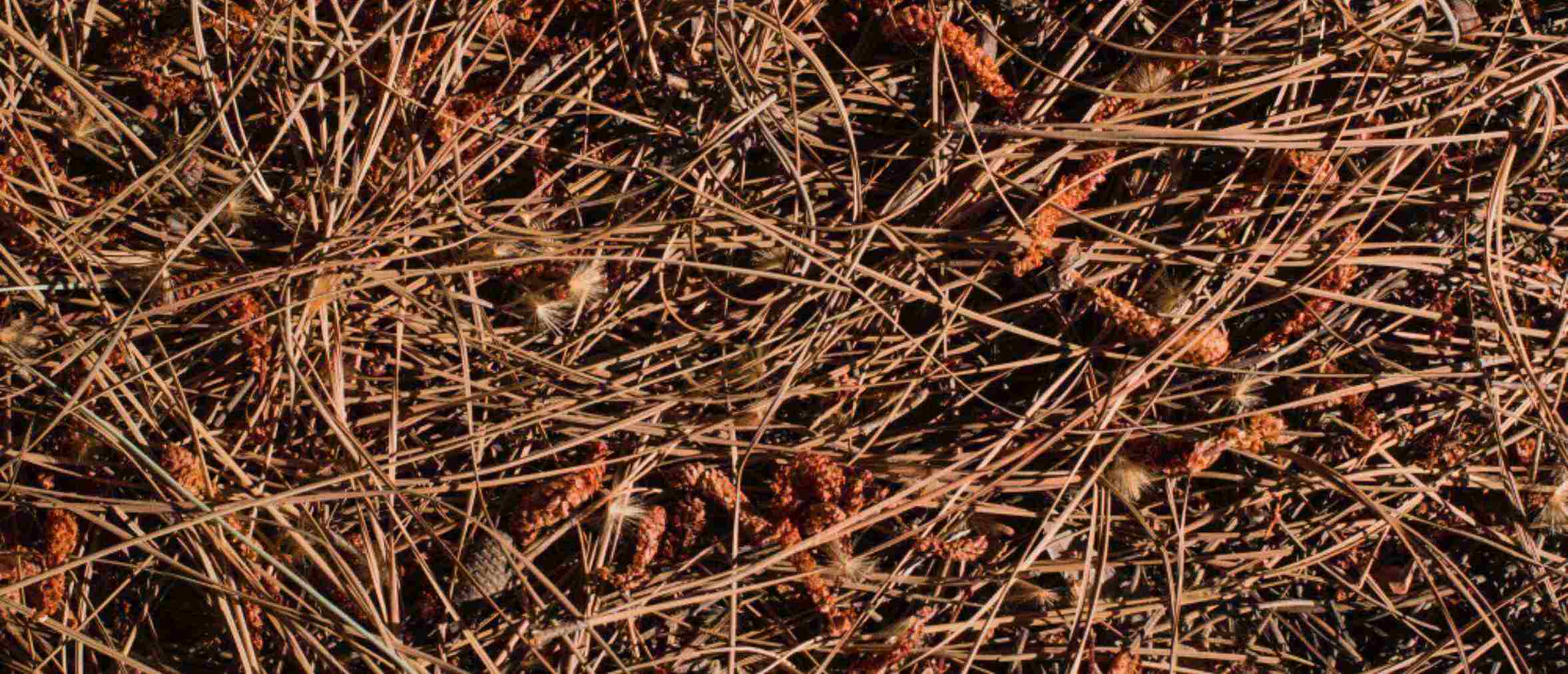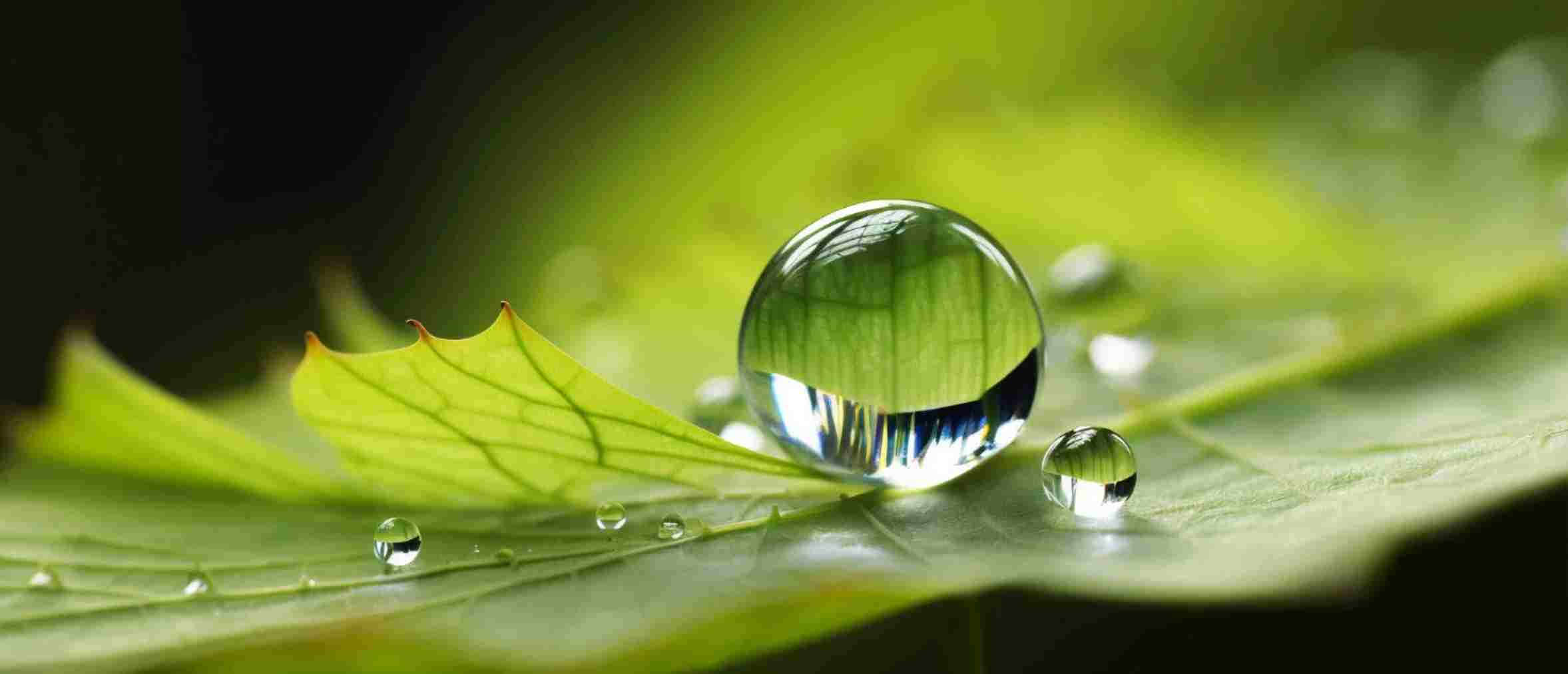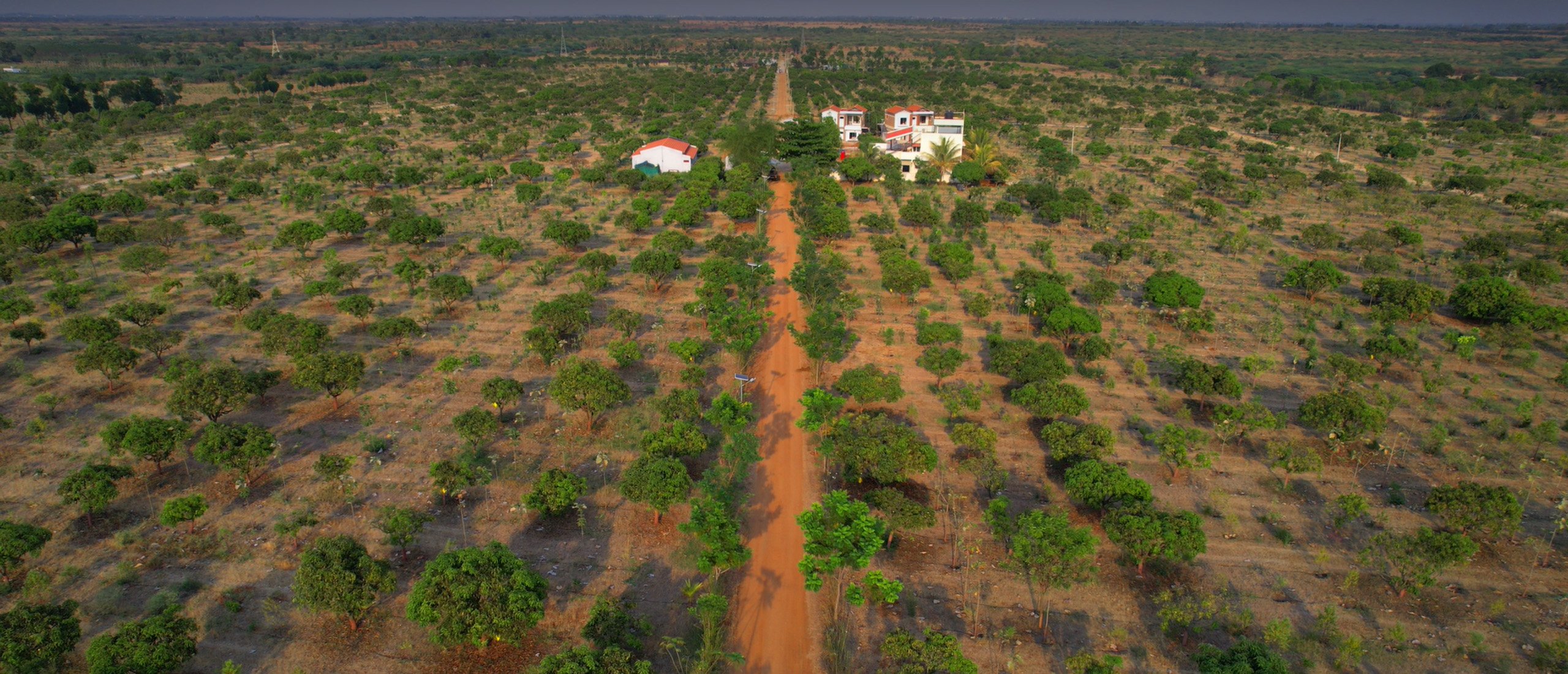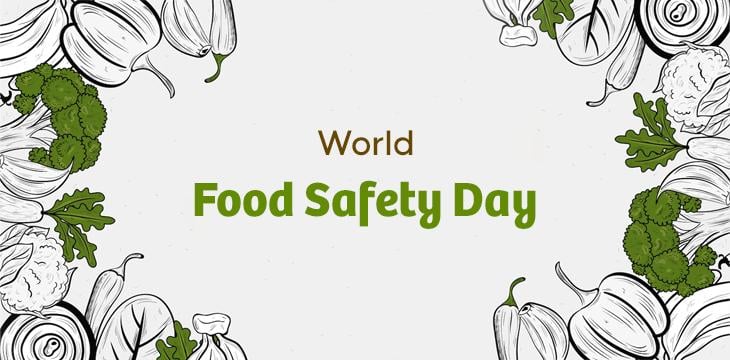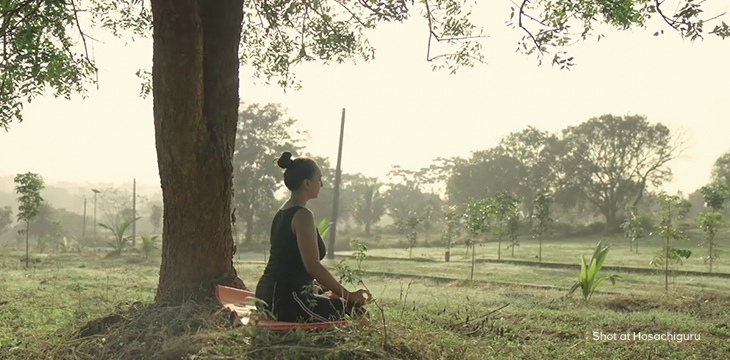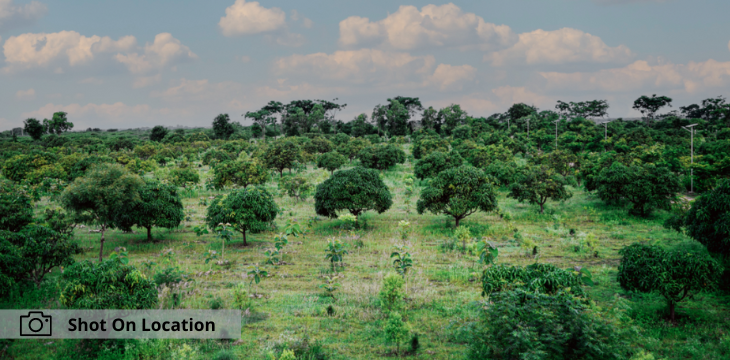December 18, 2023
Author – Srinivas Abhilash
7 Mins Read
Introduction
Ensuring nutrient-rich crops begins with healthy soil. When soil lacks essential nutrients, plants suffer, impacting the nutritional value of the food we consume. By prioritizing soil health through proper nutrient replenishment, we pave the way for robust crops and improved nutrition.
Nature itself offers a valuable lesson – in natural settings like forests, bare soil is a rarity. Nature’s seasonal cycles work to cover and protect the soil, fostering healthy interactions between plants and the soil. Maintaining soil cover is essential to nurture a robust symbiosis between plants and microorganisms, crucial for cultivating superior-quality vegetables, fruits, and a variety of crops.
Exposing soil results in drying out and requires increased effort for nurturing and upkeep. Soil tilling and sun exposure promote heightened weed growth and diminish microbial activity. Covering the soil with organic materials such as compost or leaves provides gradual nourishment, nurturing the ecosystem within. This nurturing not only benefits the crops it sustains but also impedes weed growth, fostering healthier crop yields.
Despite being deemed a nuisance, weeds serve an essential purpose in nature. Just as our skin shields our body, weeds act as a natural soil cover, preserving its hydration and health. Their role in safeguarding soil health and contributing to its hydration is invaluable.
Mulching, derived from organic materials like farm waste, agricultural leftovers, and dry leaves, is a cornerstone in effective weed control. Beyond this, mulching creates havens for beneficial ground-dwelling insects. Given the escalating concerns regarding herbicides and resistant weeds, its role in preserving soil, minimizing water loss, enriching soil fertility, and reducing weed growth becomes increasingly significant.
The term “mulch” encompasses a range of materials used in agriculture to regulate soil temperature, manage weeds, and conserve water. Across diverse cultures and over time, civilizations have embraced mulching practices for retaining moisture, curbing weed growth, and enhancing soil fertility. This ancient yet enduring practice remains pivotal in sustainable and regenerative agriculture, placing a profound emphasis on nurturing soil health and preserving our environment.
Long-Term Benefits of Mulching
- Soil Health: Mulching enhances soil structure and fertility over time.
- Moisture Retention: Helps in conserving soil moisture, and reducing water loss through evaporation.
- Weed Suppression: Reduces weed growth, minimizing competition for nutrients and water.
- Temperature Regulation: Helps maintain consistent soil temperature, especially in extreme weather conditions.
- Microbial Activity: Supports beneficial microbial populations, improving soil health.
- Organic Matter: Gradually decomposes, adding organic matter to the soil, and enriching its composition.
- Erosion Control: Protects against soil erosion, preserving its integrity.
- Plant Growth: Promotes healthier plant growth by providing a conducive environment for root development.
- Biodiversity: Encourages diverse soil organisms, fostering a more balanced ecosystem.
- Sustainability: Contributes to sustainable farming practices by reducing reliance on synthetic inputs and promoting natural soil health management.
Short-Term Challenges in Mulching
- Weed Suppression: Initially, weeds might still emerge despite mulching efforts, requiring consistent monitoring and additional weed control measures.
- Mulch Decomposition: Freshly applied mulch may take time to decompose and fully integrate with the soil, needing occasional replenishment.
- Moisture Retention: During the initial phase, excessive rainfall or dry conditions might affect how well the mulch retains moisture until it settles.
- Mulch Adjustment: Finding the right depth and type of mulch for specific crops or areas might require some trial and error, leading to adjustments.
Large-Scale Industrial Farming and Mulching: Challenges
Mulching, despite its advantages for soil health and the environment, faces challenges in large-scale industrial farming and monoculture practices. Here’s why:
- Big Fields, Big Problem: It’s tough and expensive to spread mulch evenly across huge fields.
- Machinery Limits: Farm machines prefer quicker methods like chemicals over mulching.
- Speed Matters: Farming moves fast, and fast methods fit better than slower mulching.
- Money Matters Too: Mulching needs lots of labor and money, making it tricky for big farms.
- Real Challenges: Even with its benefits, mulching is tough to use widely in these big farming ways.
Various Mulch Types and Effective Usage
- Organic Mulches
-
- Utilize materials like straw, leaves, or compost. Apply 2-4 inches thick for weed control and moisture retention.
- Hay is nutritious for the garden but can bring unwanted weed seeds, so it should be used strategically.
- Compost mulch can warm the soil, feed it, and enrich it with good microbes, but it can be expensive and erode in heavy rains.
- Wood Chips
-
- Ideal for pathways or larger areas. Keep 2-4 inches away from plant stems to prevent rot and use 2-4 inches deep.
- Grass Clippings
-
- Apply in thin layers to avoid matting, great for nitrogen-rich mulching.
- Newspaper/Cardboard
-
- Lay beneath mulch to suppress weeds. Wet before applying to prevent blowing.
- Plastic Mulch
- Effective for warming soil. Use with drip irrigation and remove after the season.
| Type of Mulch | Benefits | Disadvantages |
| Organic Mulches | Suppress weeds by blocking sunlight | Decompose over time, may need replenishing |
| Improve soil structure and fertility | Can attract pests or harbor diseases | |
| Retain soil moisture | Require more frequent replacement | |
| Break down to add organic matter to soil | NA | |
| Biodegradable and environmentally friendly | ||
| Inorganic Mulches | Long-lasting and do not decompose | Do not contribute to soil fertility |
| Effective at weed suppression | Can increase soil temperature excessively | |
| Retain soil moisture to some extent | Limited aesthetic appeal in some cases | |
| Not attractive to pests or insects | Expensive initial cost for certain types | |
| Good for pathways or decorative purposes | NA | |
| Plastic Mulches | Excellent weed control | Non-biodegradable, harmful to environment |
| Effective in conserving soil moisture | Can lead to soil temperature extremes | |
| Promote early crop growth and warmth | Soil becomes dependent on artificial watering | |
| Can increase crop yield in some cases | Removal and disposal are labor-intensive | |
| Useful in specific crops or climates | NA | |
| Rubber Mulches | Long-lasting and durable | Non-biodegradable, environmental concerns |
| Effective weed suppression | Expensive compared to other mulch types | |
| Retains moisture and does not decompose | May leach chemicals harmful to plants | |
| Low maintenance and resistant to pests | Heat absorption, potentially harming plants | |
| Suitable for playgrounds or high-traffic areas | NA | |
| Stone or Gravel | Long-lasting and durable | Heat absorption, affecting plant root systems |
| Effective weed control | Not beneficial for soil fertility | |
| Retains moisture in soil to some extent | Prone to displacement or scattering | |
| Low maintenance and good for drainage | Can be visually unappealing in some settings | |
| Adds aesthetic value in certain landscapes | NA |
Managing Heavy Metals in Soil with Mulching
Mulching helps manage heavy metals in soil by reducing their movement through erosion and runoff. While it doesn’t remove the metals, it can limit their spread and enhance soil health, indirectly decreasing their availability for plant uptake. However, other remediation methods might be needed for substantial contamination issues.
Mulching in Agro-Food Forest Creation
Consider the following strategies:
- Mulch Selection: Choose appropriate mulch materials such as wood chips, straw, leaves, or compost that align with the needs of trees and understory plants in the forest.
- Proper Application: Apply mulch around trees and plants, ensuring it is placed a few inches away from trunks or stems to prevent rot and allow for proper air circulation.
- Layering Technique: Utilize layering techniques, incorporating different types of mulch to create a diverse and nutrient-rich environment for plants.
- Mulch Maintenance: Regularly replenish and maintain the mulch layer to ensure its effectiveness in retaining moisture, suppressing weeds, and nourishing the soil.
- Utilize Natural Resources: Explore local resources like fallen leaves, organic matter from neighboring forests, or wood residues as mulching materials to support the forest ecosystem.
- Integration with Permaculture: Integrate mulching into permaculture principles by emphasizing its role in soil health, water conservation, and fostering biodiversity within the forest.
Mulching: Fascinating Facts
- Transplant Stress Reduction
-
- Heavy mulch layers, like wood chips, aid in reducing transplant stress by preventing weed competition and conserving soil moisture.
- Insect Habitat
-
- Mulch serves as a home for various small and medium-sized insects, providing additional habitat for breeding and shelter.
- Spider Abundance
-
- Experimental vegetable gardens showed increased spider populations and reduced pest damage with the inclusion of mulch or both mulch and flowering plants.
- Reduced Soil Compaction
-
- Mulch protects the soil from compaction caused by heavy rainfall or foot traffic.
- Chemical-Free Pest Control
-
- Encourages natural predators that control pest populations.
- Enhanced Root Development
-
- Promotes healthier root systems, aiding in plant establishment and growth.
- Aesthetic Appeal
-
- Enhances the appearance of garden beds and landscapes.
Mulching Tips
- For Fruit Trees
-
- Spacing: Keep mulch 1.5 to 2 inches away from the tree base to prevent trunk rot.
- Depth: Limit mulch depth to 3 inches to avoid excessive moisture accumulation.
- Material Choice: Avoid synthetic or dyed mulch containing harmful chemicals; opt for natural farm-available mulch for better tree health.
- For Timber Trees
-
- Depth: Apply 2-4 inches of organic mulch around trees, ensuring no contact with the trunk.
- Material: Use wood chips, bark, or leaves for moisture retention and soil health.
- Clear Base: Maintain a 1.5-2 inch gap around the tree base to prevent moisture buildup.
- Renewal: Periodically refresh mulch to maintain its depth and effectiveness.
- Trunk Protection: Avoid piling mulch against the tree trunk to prevent decay.
- Timing: Mulch during spring or fall for moisture retention and soil insulation benefits.
- For Green and Annual Plants
- They require green mulch that’s finely chopped to attract bacteria, which in turn generate nitrogen and elevate soil pH. These plants thrive with a bacterial presence that loves fast consumption.
-
- For Brown and Woddy Plants
- Opt for browner, woodier mulch. Trees and shrubs flourish in soil dominated by fungi, making brown material the ideal choice since fungi favor this type. Fungi are gradual but consistent decomposers.
-
Summary
Mulch serves various roles in enhancing soil fertility and promoting its regeneration. Initially, it provides shade and a cushioning effect, significantly reducing the necessity for frequent watering. This helps maintain moisture levels, ensuring that the soil remains damp and easily workable for planting activities. Beyond this, the true value of mulch lies in its ability to furnish all the essentials required for nature to initiate its wonders through the soil food web (a diverse network of microscopic organisms that decompose organic matter, recycle nutrients, and support plant growth within the soil).
Mulch, made from various materials like cardboard, damp newspaper, straw, leaves, or garden waste, works wonders when layered thickly to block sunlight. After a month under this organic blanket, the soil becomes rich, soft, and alive with worms, essentially transforming the planting area into nutrient-filled compost.
The process of mulching is vital in creating and maintaining Permaculture Food Forests (Sow Once, Reap for Generations). It maintains soil moisture, regulates temperature, and curbs weed growth, fostering ideal conditions for perennial plant growth. By nurturing the soil food web and enriching soil fertility, mulch supports sustained yields over generations, fostering a self-sustaining ecosystem.
In the world of Permaculture Food Forests and regenerative farming, mulch narrates the tale of soil rebirth, cultivating abundant harvests and thriving ecosystems.
